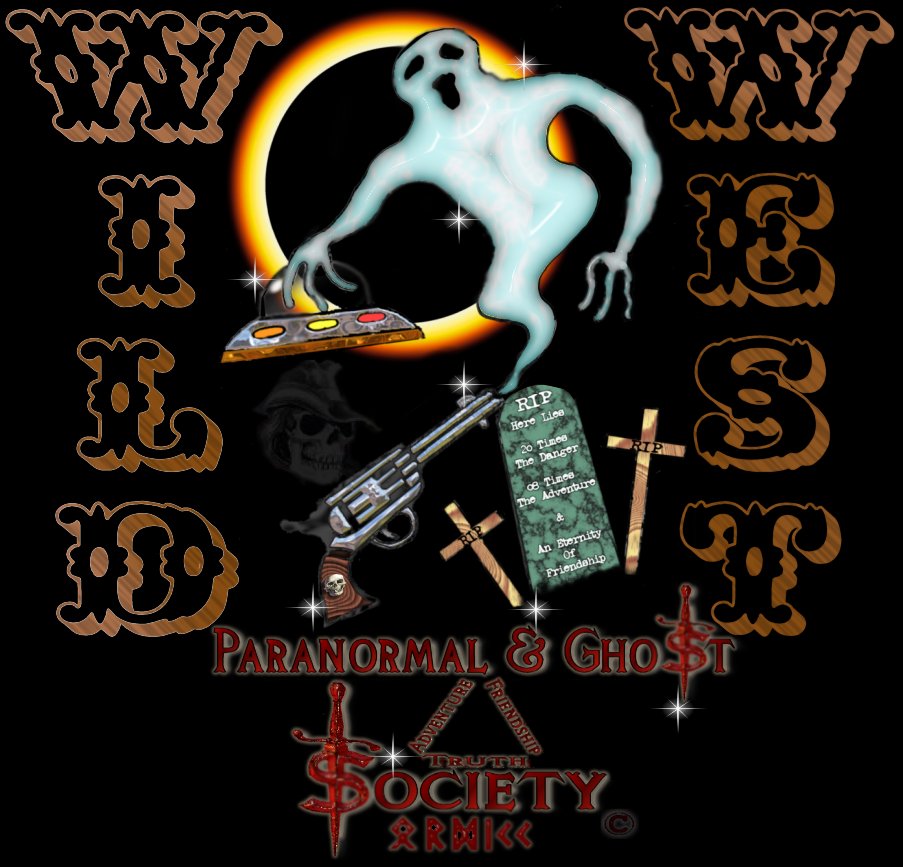| |


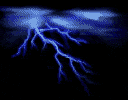

First off and foremost let me say that the Mormons are pretty good people
although I do not agree to their religion I do believe in helping one
another. I know two separate Mormons that helped me when I was homeless in
CA so that is why I had to start off this prologue with this. My friends
joke with me and they are usually like hey Lord Rick since you practice
polymory maybe you should be Mormon:) but I am not a very religious man I
try to sway my views towards science and spiritualism. But also to respect
the trees, animals, and sky above. I find Mormon girls to be very pretty
there all so feminine and goodhearted so honestly I enjoyed doing this
investigation all for the purpose of dedicating this excursion to my
Mormon friends.
This
investigation is rather of a famous place they call Old Las Vegas Mormon
Historic Park. Its also called Old Mormon Fort and it was the first
structure built by Europeans which did turn into Las Vegas 50 years
afterwards. Those first settlers were Mormon Missionaries in 1855 and they
selected a site that sat on a creek which flowed from a natural spring.
The
fort would serve as a midway point for those traveling to Salt Lake City
UT and Los Angeles CA. The fort had adobe walls that were around 15 feet
high by 150 feet long. In 1860 the US Army did spend 5 years within the
fort to protect settlers but it seen little action. The fort was rather a
missionary for the Mormons and pioneers passing through Las Vegas.
People
locally do not realize the Fort had different names at one time it was
called Fort Baker during the Civil War which was a deception by the Union
Army since it had no troops stationed here. That name was derived from
Edward Dickinson Baker. Despite the fort was almost demolished a few
times it was saved when it became a state park in the 1990s. But before
that the Las Vegas Land and Water Company acquired the property and in
1955 the land was acquired by the Las Vegas Elks. It took around 4 million
dollars to restore the property and honestly the fort still sits in ruins.
Back
in the 1800s the area was farmed by having the creek water diverted
amongst the crops. This spring would flow several miles before
drying out. But not only that the spring was visited by many native American
tribes who hunted animals in the area or collected wild plants that grew
here. This area was an oasis for travelers. Without this spring
pioneers would not be able to survive.
Many
ranchers in 1895 used this water to irrigate orchards and crops.
Eventually when Las Vegas was built they used this creek to supply the
towns people water. That is what dried it up sad to say. The spring is
still visible I walked up to it and noticed ALOT of activity surrounding
it.
The
adobe building that is closest to the creek is the only remaining part of
the fort all the rest you see in the photos are restorations to give you
some perspective. The fort also had two towers in opposite corners.
Alot of people do not know this but the building on site was used as a
testing lab and office for the United States bureau of Reclamation for the
construction of Hoover Dam in 1929. The site is significant and I
felt at home investigating this cause I honestly am very use to visiting
historical sites and I put them up on our site to preserve them and its
history.
The
area at one time had the Paiute tribe which were traders but it also had
many gold seekers traveling from the Old Spanish Trail To California. The
Spaniards that came through here called the place Las Vegas meaning The
Meadows now you understand?
The
missionaries were from Utah in 1855 led by a man named William Bringhurst
along with 29 others. The fort built had a post office and later
Lead was discovered so the mission tried to mine it but was of no success.
This cause the Mormons to move on and abandon this site. It was very hot
in the summer here and in 1865 Octavious D. Gass purchased the site and
developed a large ranch which had a store and blacksmith shop. The local
miners and travelers would visit this site when they needed something.
In
1881 the mortgage on the ranch was defaulted and it was passed down to
Archibald and Helen Stewart. Archibald was killed in a gunfight in 1884
wild wild west baby! Helen and her father operated the ranch without
Archibald. She continued to live on the ranch of course that structure
would later be demolished in 1966. Helen was called the First Lady Of Las
Vegas.
Then
in 1902 Helen sold the area to the San Pedro, Los Angeles & Salt Lake
Railroad. That is when in 1905 Las Vegas was born because now the railroad
could bring in building materials and pioneers.
©
By
Lord
Rick
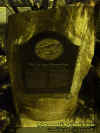
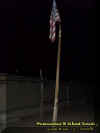
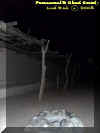

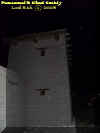
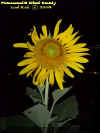



















Las Vegas, Nevada
http://members.aol.com/Gibson0817/lasvegas.htm
The earliest known people lived in the Tule Springs area from 11,000 to
13,000 years ago. These people disappeared and the area was unoccupied
until about 7,000 years ago when another hunter-gatherer society came and
stayed about 3, 500 years. Today's O'Malley Rockshelter, part of the
Gypsum Cave complex, was one of the places they lived. The Anasazi or
Basketmakers came to the Moapa Valley about 300 B.C. They lived by
cultivating crops like corn and squash and seasonal hunting and gathering.
About 1150 they left the area probably because of drought. Paiute,
Shoshoni, and Yuma people filled the gap.
On November 7, 1829 Antonio Armijo, a New Mexico trader, led a 60 man
party off the Great Spanish Trail to Los Angeles. This side trip led to
the discovery of Las Vegas. They stopped to camp in northwestern Arizona
near present day Littlefield. While scouting for water he found Las Vegas
Springs. Raphael Rivera, the scout, was the first white man to see the
future site of Las Vegas. By the mid 1830s most travellers were going the
shorter route near the Springs. Las Vegas means "the meadows."
Soon after, Jedidiah
Strong Smith, explored the area. In 1826, he led 18 men through the
Salt Lake Valley, Southwest Utah, Southeast Nevada, to the Needles,
California area, then west across California. He also explored the San
Joaquin Valley and crossed the Sierra Nevada in winter, and crossed north
central Nevada in 1827. Ten days after resting at the rendezvous spot at
Salt Lake, he took 18 more men across approximately the same route. He
left behind many journals about the Rocky Mountains and Southwest
geography that later was invaluable to other explorers.
John C. Fremont led several expeditions through here in 1844 to 1854.
His first trip was May 3, 1844. Senator Thomas Hart Benton secured a
position for Fremont in the Topographical Corps, a prestigious unit.
During his first trip, he explored the South Pass area of Wyoming. During
his second trip, he explored Oregon Country, California, and southern
Nevada. He passed by Pahrump Valley, Sturgis Springs, Mt. Charleston, and
Cottonwood Springs. His scientific reports helped open up emigrant travel.
A group of thirty Mormons were the first settlers who came on June 14,
1855. Since there were many Indians in the area, the settlement was
established as a mission. The president of the fort was William Bringhurst.
The Mormons didn't settle right at the springs since it would displace too
many Indians, so they built it about four miles east, near present day Las
Vegas Boulevard North and Washington Ave. They built an adobe fort
reinforced with timber to protect themselves and the U.S. mail from Indian
attacks. They grew their own food and each man was allotted 2.5 acres to
do that. There were common holdings for fruit trees, grain, and alfalfa.
They taught the Indians religion, farming practices, and personal hygiene.
They set up a farm as a demonstration farm for the Indians. In 1855, they
began converting the Indians, but not very many. By September 15, 1855,
they had built the president's home. In February 1856, the church called
for replacements. This group brought their families and school teachers.
On April 19, 1856, an Indian discovered a lead outcrop on Mt. Potosi ,35
miles southwest. Not long afterwards, the mission was ended in February
1857. The last group raised a record crop that year, but Indians made off
with the goods.
From 1850-1863, the Las Vegas Valley was actually part of New Mexico. In
1863, the new territory of Arizona was created, which included the Las
Vegas Valley. In January 1867, it became part of Nevada. It was never part
of the Nevada territory; Las Vegas only became part of Nevada after it was
a state.
In January 1865, Mormons came back to the area at the Muddy and Virgin
River Valleys. They established a town named St. Thomas after their leader
Thomas Smith. Other settlements sprang up including St. Joseph,
Simonsville, Overton, and West Point. The area was originally founded to
grow cotton, which was in short supply because of the Civil War.
Octavius Decatur Gass was considered a founding father of Las Vegas.
He arrived at El Dorado Canyon near present day Boulder City in 1862. He
filed six claims here on March 16, 1863. By December 17, 1864, he had
filed a total of 29 claims. This proved unsuccessful too so he turned to
ranching in the Las Vegas Valley. He grew grains such as wheat, oats, and
barley, and hired local Indians to harvest them. After the first harvest
he planted beets, onions, cabbage, potatoes, melons, corn, and Mexican
beans. He raised crops for wine, and grew figs, apricots, apples, and
peaches. He sold them to Travelers on the Mormon trail and to miners going
out to El Dorado Canyon and Potosi. In 1864 he became a congressman for
the Western Corner of Arizona while Las Vegas was still part of Arizona.
Conrad Kiel was another rancher. He came west in his 60s and looked up his
former Ohio neighbor, Octavius Decatur Gass. At first he worked for Gass,
but later built a sawmill. About 1875, he established himself at the
former Mormon Indian farm. By July 1884, it was a successful ranch. He
planted lots of fig trees. He died on January 3, 1894 at age 85.
Archibald Stewart had made his fortune in the gold rush days of
California. He came to the Pioche area in June 1868, and opened a freight
business. The business hauled Pioche ore to the Hamilton Mills. The
business expanded to lumber, then in 1869, cattle. He married Helen Wiser
on April 6, 1873. They had five children. They acquired the Gass Ranch in
1881. He continued to raise cattle and crops, while she managed a
travelers rest that was very profitable. On July 13, 1884, he was shot and
killed by former Ranch hand Schuyler Henry. Helen was the executor and ran
the Ranch about 20 years, part of it as the largest land owner in the
county. Eventually she sold the property to the railroad and left for Los
Angeles in April 1903.
There were many stops and starts to building the railroad through the
area. Actually, interests wanted a Salt Lake City to Los Angeles line.
Going through Las Vegas was just incidental. In 1901, a new line was
financed by William A. Clark of Montana . This line was known as the San
Pedro, Los Angeles, and Salt Lake Railroad. That year there was a dispute
between them and the Oregon Short Line and Union Pacific, owned by Edward
Henry Harriman. In 1903, the two lines merged to become the Union Pacific.
By 1904, trains were going as far as San Bernardino. By October 10, 1904,
the tracks going south met the tracks going east from Los Angeles had come
as far as the Las Vegas Ranch, which the railroad had bought from Mrs.
Stewart. On January 30, 1905, the north and south lines met at Jean, 23
miles south of Las Vegas. The first train from Salt Lake City to Los Angeles
came through on February 5, 1905, taking two days. On April 15, 1905, the
first excursion train came in. The formal opening the route was May 1,
1905.
Now a decision had to be made on where to build the town. Earlier, a
portion of Mrs. Stewart's ranch bought by John T. Williams, a civil
engineer, had been rented to early arrivals. This area today is bounded by
A Street, H Street, Washington Street, and Bonanza Streets. There were
1,500 people in that area. But the railroad chose its own area for the new
town bounded by Stewart, Graces, Fifth, and Main. Lots in this area were
auctioned off. 176 lots were bought for $79,566 on the first day. Many of
the buyers were wealthy Los Angeles speculators who bought lots as
investments and never returned to the area. Consequently, the town didn't
develop as the planners had supposed. By 1920, there were still only about
2,300 people here.
There were many disasters on the railroad at first. Right away a storm
wiped out a bridge 30 miles north of Las Vegas, causing a train wreck. In
July and August, a series of minor floods damaged the tracks. In March
1906, floods washed away large sections of track in Meadow Valley. In
February 1907, another flood in Meadow Valley destroyed rails and bridges.
Rails washed out in California too, so Las Vegas was isolated from service
until a detour on other tracks was arranged on April 12, 1907. Senator
Clark, president of the railroad, raised the level of the tracks and built
eight new steel bridges to stop the troubles. This worked for two years
until the big flood of 1910. All the previous construction work was
destroyed. 100 miles of track and many railroad cars were destroyed. The
railroad rebuilt the line for $658,000. A new "high line" was
built and opened April 1912. Only one flood in 1938 ever closed the road
again, that time for three weeks.
In 1909, a new and more extensive railroad shops and yards were built in
Las Vegas. Railroad employment was 400. In 1905, Clark started the Las
Vegas & Tonopah line to serve the gold fields there. After World War
I, this line was abandoned and became an auto road between Las Vegas and
Tonopah. In 1905, the Las Vegas Land and Water Company, partner of the
railroad, oiled and graveled the streets and put in underground water
mains.
Block 16 was one of two blocks that could lawfully serve liquor without
restriction. It quickly grew to sell women as well. Gambling was also
popular. Saloon-bordello type establishments with "cribs" in the
back were common. The Arizona Club was the poshest. The seedy reputation
of Block 16 came to an end after World War II when city government
canceled beer licenses and slot machine permits. Without those the
businesses could not make money. The area degenerated into sleazy rooming
houses. Finally, in 1946, most structures were demolished. Most lots are
now parking lots.
In 1917, the railroad closed and civilian construction projects slowed,
restricting the growth of the town. Travel to Reno was then cut off with
the end of the railroad. Western Express (now Western Airlines) made the
first commercial flight on April 17, 1926. On May 23, 1926, the first
passenger air service came through Las Vegas on the Los Angeles to Salt
Lake City run. Western Airlines also carried the mail.
Gambling had been legal in most western states from 1869-1910. From
1910-1915 there was a shift in games declared legal. From 1915-1913, most
games were illegal but Nevada ignored the law. A reduction in income from
mining made gaming necessary for the economy. So in 1931, wide-open legal
gambling and easy divorce laws were legislated during the depression. Easy
marriages had always been available up to that time.
On December 21, 1928, the Swing-Johnson Bill passed, authorizing
construction of a dam on the Colorado. Black Canyon was chosen as the
building spot ecamse of its better rock formations and because it would
require a shorter special rail line for supplying the builders. The dam
was popularly known as Boulder Dam, though it was officially named Hoover
Dam. The contract for $48,890,995 was awarded to a consortium formed
specifically for building the dam. The consortium was called Six
Companies, Inc, comprised of Utah Construction Company, Pacific Bridge
Company, Henry J. Kaiser and W.A. Bechtel Company, MacDonald & Kahn
Company Ltd., Morrison-Knudsen Company, and J. F. Shea Company.
The federal government decided not to house its workers at "Sin
City" (Las Vegas) so set up a new town nearby for the purpose. On
January 4, 1931, the Bureau of Reclamation's Elwood Mead designated land
for Boulder City. The town was designed for a maximum size of 5,000.
Surplus houses from the 1932 Olympic games were trucked from Los Angeles
to Boulder City. Electric power to the dam site was purchased from San
Bernardino 222 miles away.
The building of Hoover Dam started in 1931 and finished 1936. The dam
eventually used 3,220,000 cubic yards of concrete, more than the previous
50 dams built by the Bureau of Reclamation had built combined. On
September 30, 1935, President Franklin D. Roosevelt dedicated the dam as
Boulder Dam. In 1947, the name was changed back to Hoover Dam by Congress.
Over 5,000 worked at the dam at its peak. 117 men died during its
construction. The first electricity went on line on October 26, 1936.
California gets 46% of its juice, while Nevada and Arizona split the rest.
All kinds of money was pumped into the economy of Las Vegas while dam building
was going on. Some 200,000 tourists spent money while they came to witness
the dam project. But most of it was worker's pay checks spent at Las Vegas
speakeasies, Block 16, and legal gambling. At first, gambling licenses
were granted for slots only. Many cafes and hotels had then. The City of
Las Vegas granted licenses only within a geographical area, which at the
time was on Fremont east of Main. Gambling is still only done within a
certain geographical area.
Typical 1930s gambling houses were small downtown clubs with harsh neon
signs that catered to working men rather than high rollers. In the late
1930s, experienced gambling operators, mostly from southern California,
came to Las Vegas. Guy McAfee the boss of Los Angeles gambling, built a
club in downtown Las Vegas. The capital brought new prosperity. Las Vegas
was also actively trying to capitalize on its proximity to Los Angeles and
Hollywood by providing quick and easy marriages and divorces. By 1940,
there were 13,327 marriages in Las Vegas. By 1941, there were over 1,000
divorces.
More money came from the U.S. government during World War II. This was
when they government built the Las Vegas Army Air Field, later Nellis Air
Force Base, for a bomber gunnery school. It was built from 1941-42 and
used soon after the attack on Pearl Harbor . 4,000 students graduated
every six weeks. It was renamed Nellis Air force Base, after first
lieutenant William Harrel Nellis, who was killed in action over Germany on
December 27, 1944.
Another new source of income was the discovery of brucite and magnesium in
Nye County. Howard P. Eells formed Basic Magnesium Inc. to produce the
metal, which was needed for airplanes. More than 70,000,000 tons had been
found, the largest deposit in the world at that time. One plant was built
near the ore at Gabbs. The other was midway between Las Vegas and Boulder
City. It was the largest producer of metallic magnesium in the United
States. Many black workers came in at this time. The company built homes
for them at a new town site, eventually called Henderson (named on January
1, 1944 after Charles Belknap Henderson, a U.S. Senator from Nevada from
1918-21). On March 30, 1942, water from Lake Mead flowed into the company
reservoir. Its first production was in October 1942. It ran for 807
consecutive days of operation until November 15, 1944. By then it had
produced 166,322,685 pounds of ingots. On October 27, 1942, Anaconda
Copper Mining Company took over Basic Magnesium Inc.
The first large casino was El Rancho Vegas built on the Los Angeles
highway (The Strip). It opened in April 1941 with a Spanish motif near the
present day Sahara. In December 1942, The Last Frontier Hotel, owned by
Texas movie theater magnate R.E. Griffith, opened ½ mile south of the El
Rancho. This construction, the air force base, and the magnesium plant
created a demand for housing. By the end of the war, 1,166 new units had
been built.
Benjamin "Bugsy" Siegel, an eastern gangster, came to Las Vegas
in the early 1940s. He wanted respectability, so he entered legal gambling
by buying part ownership of the El Cortez casino. He was attracted to the
potential of the Strip so he bought land there. He built an elaborate
casino ignoring all building restrictions. Soon he ran out of money and no
one local would extend a loan to him. So he got some eastern investors to
finance the Nevada Projects Corporation. The hotel was the Flamingo. He
disdained the notion of western decor prevalent in the other gambling
houses and restraints of the time. His employees wore formal dress and the
patrons were expected to dress formal also. He wanted to attract wealthy
southern California and Florida players, not locals. The grand opening for
his casino was December 26, 1946. He used big name talent to turn a
profit. He rose the salaries of the paid celebrities. Six months later, he
was shot to death in Beverly Hills. But his influence remained. New
casinos didn't use western decor either and big stars paid large salaries
became the norm. The Flamingo still operates today.
Something was needed to keep the city growing after the war boom years.
The city hired J. Walter Thompson, a nationally recognized advertising
expert. Instead of roadside billboards, he advertised in New York City
dailies and general interest magazines throughout the United States. Other
agents were used too. The Steve Hannager Agency used
"cheesecake" photos to advertise. All this advertising did its
job. Even the atomic testing that began in Nevada, was used as tourist
attraction, inviting visitors to come see a bomb detonate. By 1952, gaming
surpassed mining and farming as the number one industry. From 1950 to
1954, property value had gone from $58 million to $131 million. It was the
fourth largest growing city in the U.S.
After the war, the army had been considering closing the base. But the
city fathers wanted it to remain open because of its economic benefits,
plus the base gave the city an air of respectability. Major E.W. Cragin,
Maxwell Kelch, and R.B. Griffith talked to Nevada Senator Patrick A.
McCarran who told them, the lack of moderately priced houses for career
military families and sharing the field with a civilian airline were what
the army was concerned about. On May 1, 1947, the city floated a bond for
$750,000 to build a separate civilian airport. Then on July 26, 1947, when
the Air Force was made a separate armed forces division. Air Force brass
were more receptive to the idea of staying in Las Vegas than the army men
had been. The air base stayed. A single engine training school was added.
100 planes stationed there. A gunnery school was added. On May 20, 1950,
the name was changed to Nellis Air Force Base. In June 1956, it became the
home base of the Thunderbirds air-demo team.
In late 1944, the magnesium plant was shut down. People needing jobs left
Henderson. But both Las Vegas and the state wanted to save the town. The
plant was leased to several tenants by a private corporation and people
began to move back. The price paid to the government was $1 down with the
rest of the $24 million to be paid from profits of the renters. The town
was saved and was officially incorporated on June 10, 1953 with about
6,300 people.
People welcomed the test site at Yucca Flats and Frenchman Flats for the
income it would bring. On December 1950, the Nevada Test Site was
announced. Building began on January 1, 1951. The first test was a ten
kiloton bomb dropped from a plane on January 27, 1951. It was first called
the Nevada Proving Ground, then later the Nevada Test Site. The site was
expanded in the 1960s to 1,350 square miles. After 1962, all tests were
conducted underground. By the end of February, 1986, 646 announced tests
were conducted. Miss Atomic Blast was named during some of the hoopla and
parties that surrounded the early tests.
In 1951, the first college courses were offered as an extension of the
University of Nevada at Reno. In 1957 it was renamed Southern Regional
Division. In 1965, the name was changed to Nevada Southern University,
then finally to University of Nevada, Las Vegas, in 1968.
In 1953, a convention bureau was formed to attract visitors during the
week and at slow times during the year. Almost immediately business
leaders realized a convention facility was needed. The new Spokane
Coliseum was chosen as the model. The facility was paid for by hotel/motel
taxes. It was dedicated on April 18, 1959. It had 7,500 seats with 27
multi-purpose rooms and an exhibit hall with 90,000 ft2.
By 1953, eight commercial wedding chapels stood downtown and on The Strip.
Hollywood stars going to Las Vegas for weddings and/or divorces helped
popularize the town, such as Rita Hayworth and Joan Crawford. In 1957, the
Dunes brought Minsky's Follies, a famous New York burlesque producer--his
show featured topless chorus girls. Caesar's Palace opened 1967, by the
big names were going for $100,000 per week. The MGM Grand opened in 1973
and raised the ante to $150,000-$200,000.
Up until the 1970s, women had been discouraged from working as dealers. In
the 1950s the Santa Anita and the Monte Carlo hired a few women, but no
one followed their lead. In 1966, only one of three Las Vegas dealer's
schools would even accept female students. There was even a resolution
passed on November 5, 1958, by city commissioners, that recommended women
not be employed. They felt it would corrupt public morals. The Civil
Rights Act of 1964 changed the attitude. Women and Hispanics began to be
hired regularly. It took longer for blacks. They would be invited as
entertainers but not allowed to stay in the hotels or use hotel facilities
where they performed. They were not hired in casino jobs either, except as
menial laborers. Some progress had been made by the early 80s.
The games have changed over the years. Monte, faro, and chuck-a-luck have
mostly disappeared. 21, craps, and roulette are still very popular.
Baccarat came on in the 60s but by the early 80s was popular only in the
larger casinos. Slots have changed the most, but are still very popular.
There are $1, 25¢, 5¢, and 1¢ machines.
Air conditioning also led to the growth of Las Vegas. The first public
building in the county to be air conditioned was at Boulder City. One of
the first Las Vegas buildings to get air conditioning was the White Spot
Cafe. By the 50s, no one would dream of building without air conditioning.
The Apache Hotel probably was the first hotel with air.
EG&G Las Vegas opened in 1953. The company was named for Edgerton,
Germeshausen, and Grier. EG&G was the prime contractor to the U.S.
Department of Energy-Nevada. EG&G provides technical and field support
to the U.S. Department of Defense. The company's founders worked with MIT
during World War II, during the Manhattan Project. The three men did
research on the first atomic bomb. In 1947, they formed EG&G to serve
as a private contractor to the U.S. government. They continue to support
nuclear weapons testing, non-weapons research and development, and
low-level waste management. At Las Vegas contains the world's largest and
most complete collection of radiation exposure records for nuclear
testing.
The Four Queens Hotel & Casino grand opening was June 2, 1966. It was
dedicated to owner Ben Goffstein's four daughters. The hotel was bought by
Hyatt in 1973. Harrah's began in 1937 with a bingo parlor n Reno by
William Harrah. Its first full-fledged casino opened in 1946 on Virginia
Street (the Strip) in Reno. In 1973, it was the first "purely gaming
company" to be listed on the New York Stock Exchange. In 1980, it was
bought out by the Holiday Corporation. The hotel chain came to Las Vegas
in 1972 on the Strip.
Clark county Community College was dedicated on October 11, 1971. Its
first year it had 1,784 students. It was already too many for the present facilities.
On January 1975, the campus moved to the Cheyenne Campus, an 80-acre lot
donated by the city of North Las Vegas. In August 1981, an 80-acre campus
extension opened in Henderson. By 1986, 80 acres had been reserved on West
Charleston for future expansion. By 1986, 11,000 students were enrolled in
the two main campuses and the many satellites at various high schools,
churches, etc. Special programs catered to military personnel at Nellis
Air Force Base and for inmates at state prisons at Jean and Indian
Springs. They also broadcast classes for remote areas and people on
irregular shifts.
The Imperial Palace opened on November 1, 1979. It was the only major Las
Vegas hotel with a single owner Ralph Engelstad. He built the site of the
old Flamingo Capri Hotel with a oriental theme. The auto collection came
here in December 1, 1981. It was the 7th largest hotel in the world in
1986.
|
|
|
society, Mib, conspiracy, time travel, specters, Armageddon, prophets,
prophecy, paranormal, ghosts, aliens,
haunted houses, cryptozoology, dimensions, apocalypse, Atlantis, curses, monsters, wildman, yeti, cemetery, stigmata, vampyre, vampires, angels, bizarre,
metaphysics, Atlanta, Louisiana, Myrtle Beach,
planet x, mothman, jersey devil, apparitions, werewolf, werewolves, devils, vortexes,
Bermuda triangle, lycanthropes, mystery, ancient, spirits, cydona, mythology,
Charlotte, Atlanta, Mobile, possession, possess,
mailing list, parapsychology, poltergeist, evp, investigation, crop circles, Roswell, abduction, project blue book, living dinosaurs, religious miracles, ny, sightings, north
Carolina, south, brown mountain,
cleansing, shadowmen, beast, ogopogo, death, portals, spontaneous human combustion, zombies, ouija boards,
nostradamus, Edgar Cayce, art bell, George Nooray, Magick, Paganism, Wicca,
Tennessee, Halloween,
bigfoot, Sasquatch, ufo, grays, ufos, vortexes, alien, hybrids, Haunting's, demons, demonology, occult, mystics,
lochness, chupacabras, equipment, Thermal, EMF, Cassadaga, energy, asteroid,
civil war,
spooky, scary, adventure, ectoplasm, orbs, graveyards, demons, spirits, cults, buffalo, new
York, ghost society, logo wear, equipment, books, videos, music, certification, Castles,
Forts, fortean, phenomena, nonprofit, business, investigations, SPH, EMF, ghosthunting,
organization, conventions, hollow earth, paranormal & ghost Society, detector, posters, mailboxes, donate,
Buffalo, xfiles, Ectoplasm,
magick, spells, wicca, paganism, holy, cross, NWO, Patriot, 911, September
11th, tours, cryptid, ghostlights, dinosaurs, Florida, Fl, Daytona Beach, Jacksonville, St.
Augustine, Debary, Miami, Tampa bay, Sarasota, Pensacola, NASA, Cape Canaveral,
Space Coast, space shuttle, gulf breeze, key west, Sanford, port orange, Ormond beach, New Smyrna, Orlando, Disney
world, Tallahassee, Stetson university, panama city, Alabama, Georgia, Savannah, New Orleans, Cocoa Beach, Ocala, plantations, Fort Lauderdale, Melbourne, Naples, Lake
Wales, grim reaper, everglades, Seminoles, big cats,
Fort Myers, St. Petersburg, Lakeland, Gainesville, West Palm Beach, bike week,
spring break, Deland, Deltona, Orange City, weird, strange, bizarre, mysterious, rituals, skunk
ape, adventure, ships, ghost pirates, ball lightning, x-files, conspiracies, Las
Vegas, California, Nevada, wild west, Mojave, Navajo, timucuans, Seneca's, Iroquois,
Cult, Occult, Indians, Historical, Bands, Gothic, New Age, Spiritualism,
Parapsychology, CA, California, youtube, media, hard rock, heavy metal, Portal,
666, demons, fallen angels, gods, CA,
Reno, Las Vegas, Sacramento, San Francisco, Roseville, Woodland, Davis, Los Angeles,
Oakland, San Jose, Lodi, Napa, Vallejo, San Andreas, Modesto, Tahoe, Santa Rosa,
Redding, Yuba City, San Diego, Eureka, Chico, Fresno, Salinas, Stockton, Oxnard,
Auburn, Fairfield, Vacaville, NV, Carson City, Nevada, Eldorado, Yosemite,
Merced, Hollywood, Eugene, Oregon, Salem, Portland, Bend, Boise, Salt Lake City,
Seattle, Washington, AZ, Phoenix, Native American Folklore, Beatty, NV, Sin
City, Mines, Bakersfield, Fresno, Jackson, San Andreas, Sutter Creek, Folsom
Lake, Citrus Heights, Redding, Sierra Nevada's, Foothills, Spaniards, Savannah,
Kinzua, Hoover Dam, Henderson, 420, Marijuana, weed, pot, joint, science, caves,
spelunking, stunts, extreme, desert, woods, swamps, caving, tunnels, catacombs,
UE, Urban exploration, abandonment's, video, movies, production, new age,
ambient, techno, Satanism, convention, conferences, thermal detector, digital
recorder, d5, deggi5, abandoned, trespass, trespassing, death, druid,
curse, cursed, Chumash,
Hupa ,Mission, Nez Pace, Pajute, Pomo, Salish, Ute, Creek, Cherokee, Chickasaw,
Pueblo, Hopi, Anasazi, Apache
|
|

